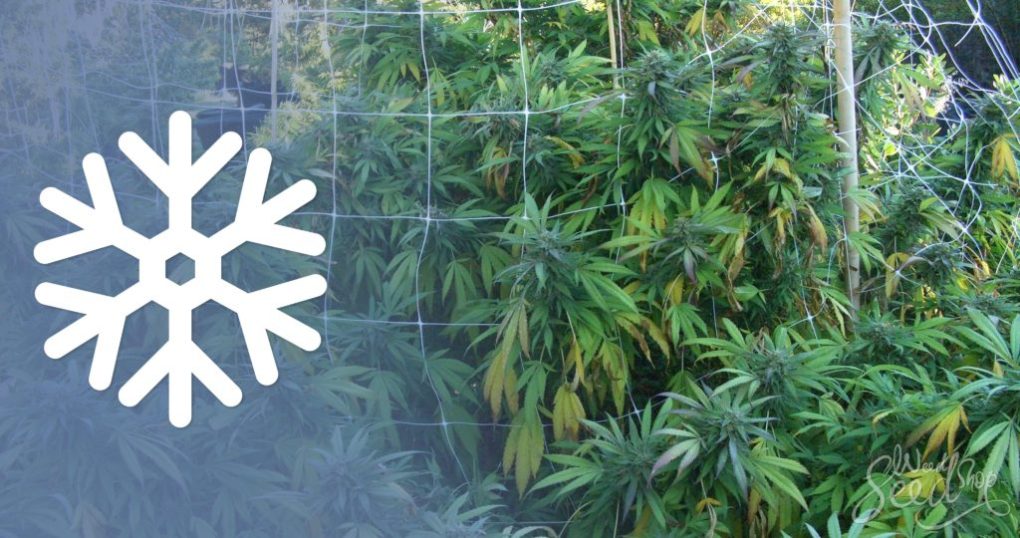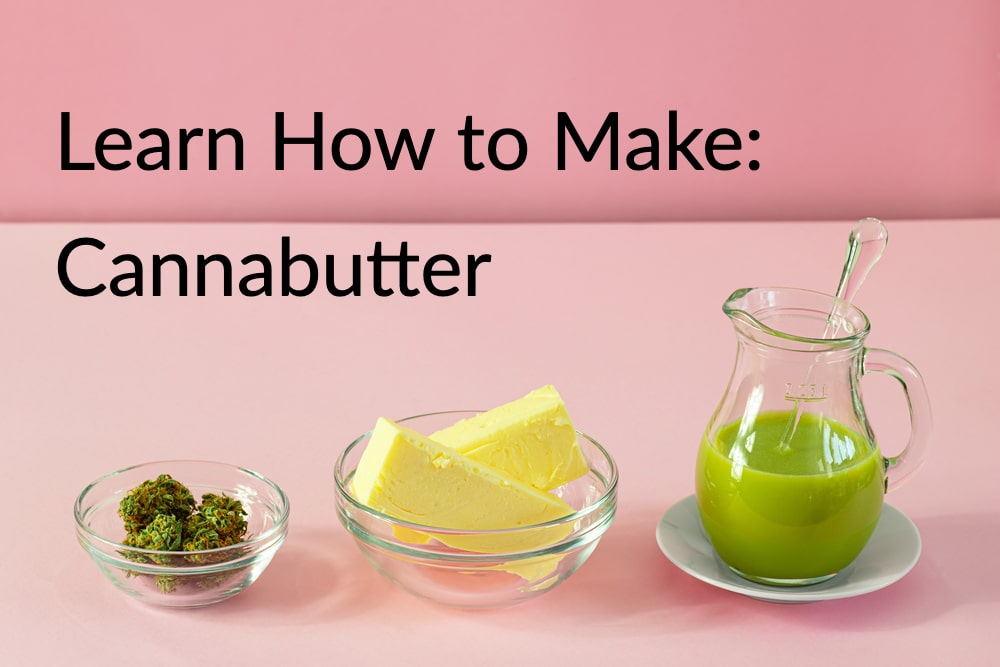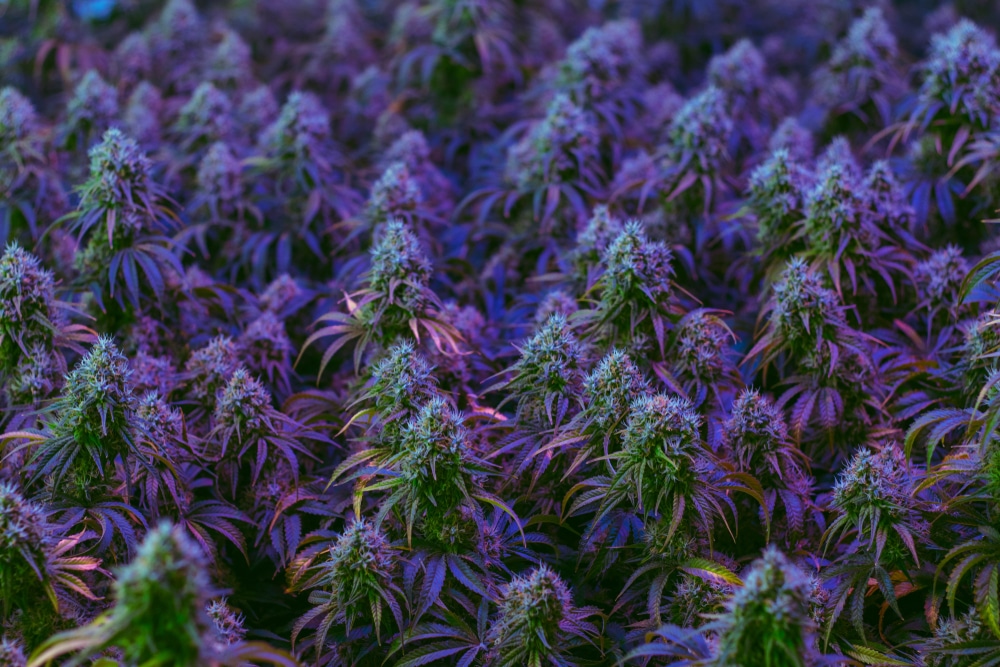No products in the cart.
Marijuana Education
What’s the Lowest Temperature Weed Plants Can Survive In?
Do you know the lowest temperature weed can survive and thrive in? It’s colder than you might expect.
Growing weed can be challenging, and even more so as the temperatures drop. Cold weather can wreak havoc on plants, causing diminished harvests, disease, damage, and even death. It’s not all doom and gloom, though.
With the appropriate techniques, you can raise healthy weed even in frigid weather. We’re here to explain the limits, approaches, and warning signs to look out for.
Join us to learn about cannabis temperature limits and essential strategies to keep it flourishing despite the chill. From critical thresholds to cold-weather cultivation techniques, we’ve got you covered.
Let’s get started.
What’s the ideal temperature for cannabis plants?
Before diving into the lowest temperature for growing weed, let’s discuss the basics. Understanding the standard range helps determine if and how much you can deviate.
Temperature is a crucial factor in cannabis cultivation. It can affect everything from the growth rate and general plant health to the harvest quantity and quality.
Like most living things, cannabis enjoys balmy conditions. Not too hot and not too cold is the way to go. Luckily, it can also tolerate considerable variation.
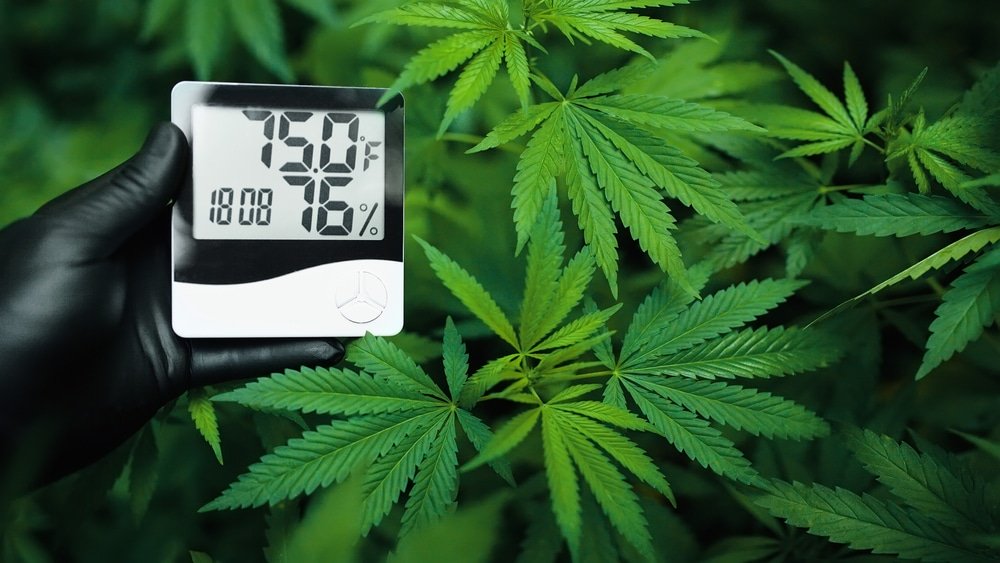
The ideal growing temperature for cannabis depends primarily on its life stage. Vegging plants thrive in a 70–85°F range, as this phase generally happens during the summertime. High heat encourages explosive growth and root development.
Flowering plants enjoy temperatures of 65–80°F. Cooler bloom weather mimics the transition from spring to fall and helps preserve the terpenes in your buds.
Nighttime temperatures should be 10°F lower than those in the daytime. Colder weather during lights-off lets plants cool down, but excessive fluctuations stress them.
Genetics help you find the ideal number within this broad range. Sativa hails from tropical areas and prefers things warmer than mountain-originating indica.
We shouldn’t ignore the relationship between temperature and humidity, either.
High humidity and temperature create a breeding ground for pests and mold, while dry air causes drying and damage. To prevent these issues, establish balanced humidity based on warmth and growth stage.
Can weed plants still grow in the cold?
Can your garden still grow in cool weather? The short answer is yes, but there are limits. Cannabis can tolerate various temperatures, but excessive cold can deteriorate their health, growth, and yield.
What’s the lowest temperature a weed plant can survive in? It can grow at 50°F and withstand anything over 32°F. Unfortunately, the cold isn’t without consequences.
In the daytime, cannabis can handle temperatures as low as 60°F without significant alterations. If the weather is colder, the plants struggle to reach their full potential. They become vulnerable to pests and pathogens (which don’t go dormant in the winter).
Nighttime temperatures below 50°F induce stress, reducing yield size and bud quality. The consequences are more pronounced in the veg stage when plants expect warmer weather.
The duration of low temperatures is also crucial. Cannabis plants can handle brief cold periods, but extended exposure causes permanent damage. Leaves may turn yellow or brown and become brittle, and growth slows or grinds to a halt.
How morning frost and snow affect weed plants
For outdoor growers, the cold weather doesn’t only chill the air. It arrives accompanied by other factors, like frost and snow. These are crucial to consider as we discuss the lowest temperature for weed.
Frost occurs when water vapor in the air freezes on leaf and bud surfaces. It can cause severe damage to your weed plants.
Frozen water breaks down plant cell barriers and causes them to deteriorate. The leaves and flowers soon go black or brown and die off. The trichomes suffer the same fate upon prolonged exposure.
Snow is also problematic for cannabis. Heavy snowfall can weigh down the branches, causing them to snap or break. The weight of the snow can also compact the soil, preventing the roots from getting the necessary nutrients and water.
Morning frost and snow also slow down the growth cycle of cold-weather weed. The plants focus on survival, take longer to reach maturity, and deliver lower yields of lower-tier buds.
What are the best ways to protect weed crops from the cold?
The situation we’ve described so far looks dire. The lowest temperature weed can survive is indeed low, but the consequences are severe and all-encompassing.
What if we said you could bypass those adverse reactions? Here are the four key strategies for minimizing cold damage to your weed.
1. Choose genetics wisely
The best temperature for cannabis differs based on strain origins and genetics. Different cultivars have varying levels of cold tolerance, affecting your future cultivation success.
Firstly, seek strains bred for cold weather cultivation. Some breeders developed cold-tolerant cultivars by selecting traits like antifreeze proteins. Another strategy is to pick those with lighter green coloration, as they have more cold-resistant chlorophyll b.
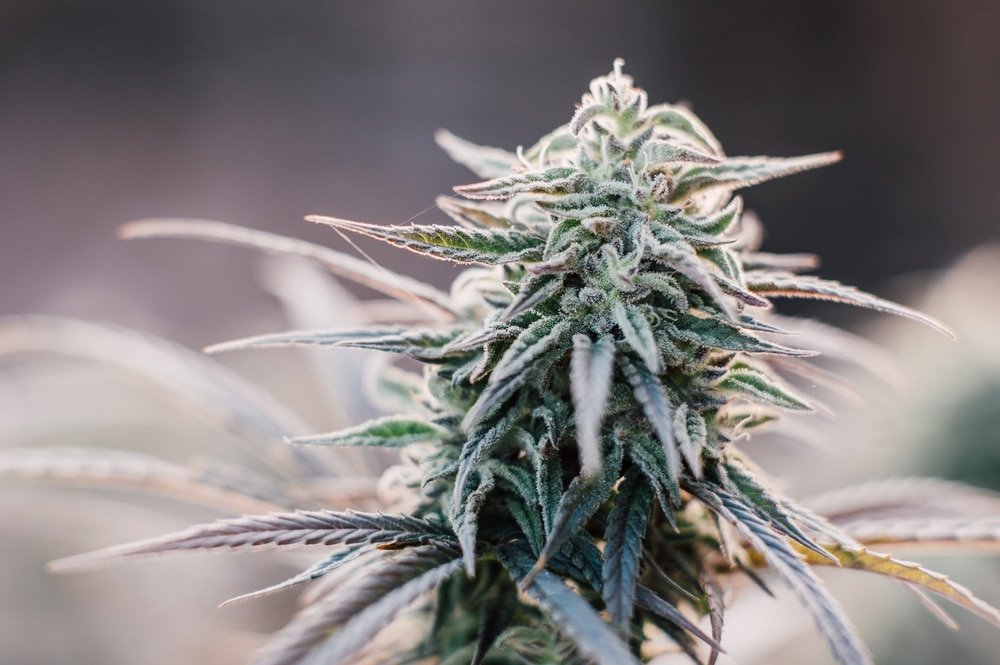
Looking at the family tree is another handy approach. Strains with origins in mountain regions, like those with indica-dominant genetics, adapt better to chilly weather.
You can also choose fast version or autoflower weed seeds for rapid development. The less your plants spend outdoors, the better the results. As a bonus, both variants display additional sturdiness from their ruderalis genetics.
Not sure where to start? Here are some suitable cold-weather weed options from our library:
- Purple Dragon is a balanced hybrid with pine, sage, and spice scents. It delivers considerable yields of gorgeous pink and violet buds.
- Aurora Borealis is another 50/50 hybrid, this time with a honey-citrus aroma. It’s mid-sized, easy to raise, and super-sticky.
- Holland’s Hope is 100% indica with a warm, earthy flavor. It’s bushy, tolerant to unforgiving climates, and hyper-yielding.
- Buzz Bomb is a heady sativa with a fresh pine flavor. It’s compact for its genetics, adaptable, frosty, and prolific.
- Queso is slightly indica-dominant and has an incredibly cheesy bouquet. It’s tall, hardy, and very colorful as it reaches maturity.
2. Find a good spot
Picking the proper spot for your garden can make or break the endeavor. The growing temperature for cannabis is only one factor. The location should also have ample sunlight, shelter from the wind, and protection from extreme cold.
Look for areas that receive the most sunlight throughout the day. Think south-facing slopes or spots not shaded by buildings or trees. The light warms plants and helps them photosynthesize.
Select a spot with good insulation to shield plants from extreme cold. Locations surrounded by walls act as barriers to the chilly air, wind, frost, and snow. Those on raised surfaces made of materials that don’t transfer cold, like wood or plastic, are also suitable.
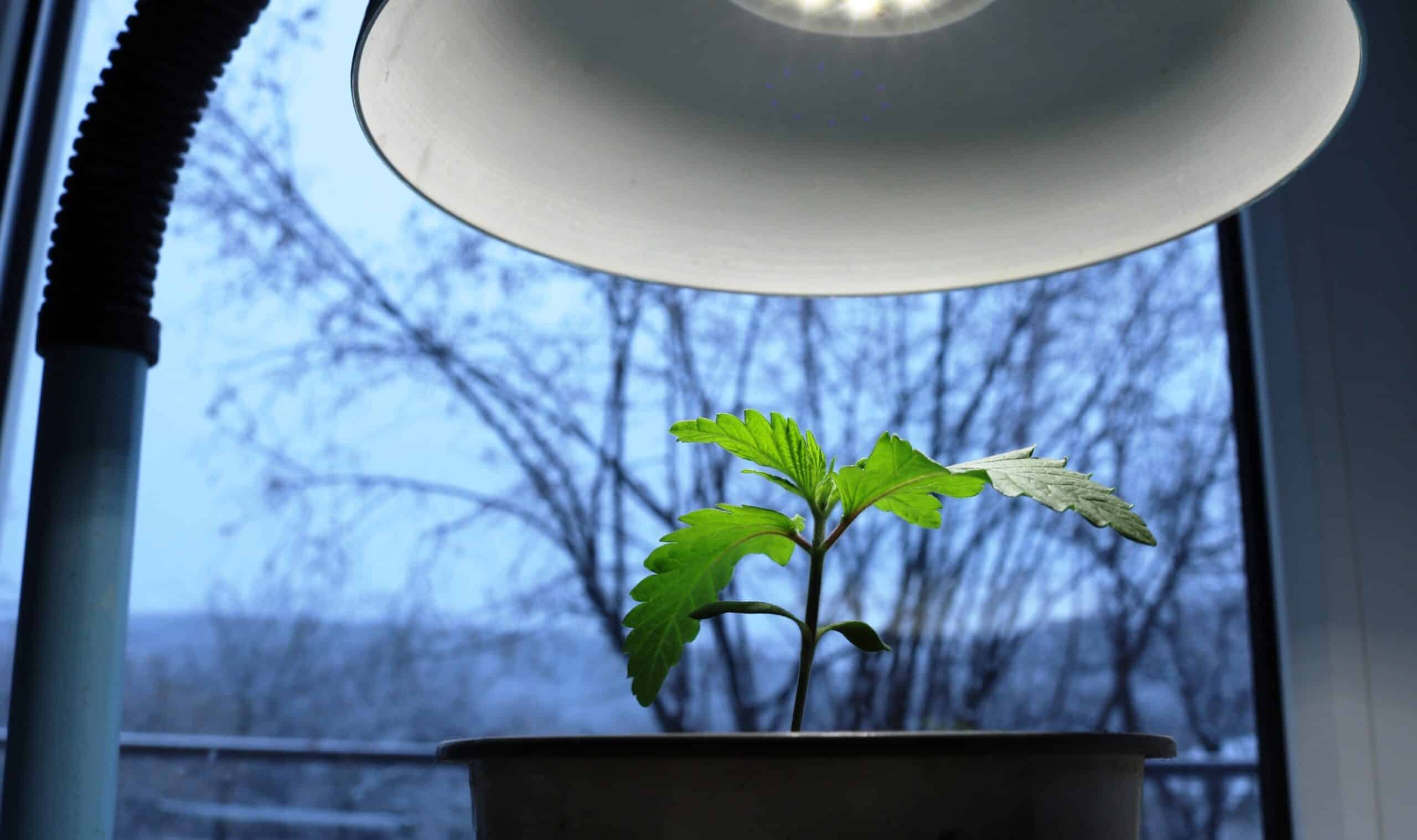
3. Use pots to increase mobility
Using pots instead of planting directly into the soil is a great way to protect your garden in the cold.
Containers let you move plants to warmer locations should the weather go below the lowest temperature weed can survive. You can also transfer them back outside during warmer periods.
To increase mobility, choose lightweight pots of the appropriate size. They should be large enough for the roots, but not so bulky that it’s hard to move. Pick plastic or fabric containers (which have the added benefit of breathability).
Don’t disregard pot saucers or trays if moving your weed indoors. They catch drainage and prevent damage to wood floors. You could also employ pot roller wheels to make transportation easier.
4. Start seedlings indoors
The appropriate temperature for growing marijuana varies with the life stage. While adult plants are relatively resistant to extremes, seedlings suffer in cold weather. Starting them in a warm indoor space gives them a head start and ensures they’re strong when they go outside.
Germinate your weed seeds and place them in lightly fertilized, moist soil. Pick a small pot to adequately house the roots, and consider biodegradable ones for easier transplantation. Keep the baby plant under a fluorescent lamp until it has its first real leaves.
The best temperature for cannabis seedlings is 70–75°F combined with around 70% relative humidity. They have this preference for the first 2–3 weeks.
Don’t instantly move your seedlings outdoors. Harden them off by gradually exposing them to cold conditions over 1–2 weeks. Start by keeping them outside for an hour a day and increase the time slowly for the best results.
Keeping the roots warm helps plants survive
When examining the lowest temperature for weed, we prioritize the plant’s above-ground sections. After all, the leaves and branches show visible distress, so our instinct is to protect them. While these concerns are valid, you shouldn’t disregard the situation below the ground.
During cold weather, the roots struggle to absorb the necessary nutrients and water from the soil. By keeping them warm, you ensure they stay active and are able to absorb the resources your plants need to grow.
You can use several techniques to protect the roots of your cold-weather weed. These three are straightforward and efficient:
- Use a heating mat or pad: Place them under the containers to offer a gentle, consistent heat source. Don’t expose them to water or humidity since they use electricity.
- Add a layer of mulch: Mulch can insulate the soil and keep it cozy. It also helps the medium retail moisture, preventing the roots from drying out in cold, arid weather.
- Raise your containers: Keeping your pots or garden beds above ground protects them from the worst of the freeze. It also leaves room for insulation, making soil temperatures more gentle and consistent.
Growing outdoors in the winter
Now that you understand the appropriate temperature for growing cannabis, should you attempt it in winter?
Wintertime outdoor cultivation is challenging yet rewarding. It’s an opportunity to learn about the plant’s ability to adapt and explore new techniques. On the other hand, the short days, chill air, and harsh conditions mean you’ll spend more time and resources on lower-quality buds.
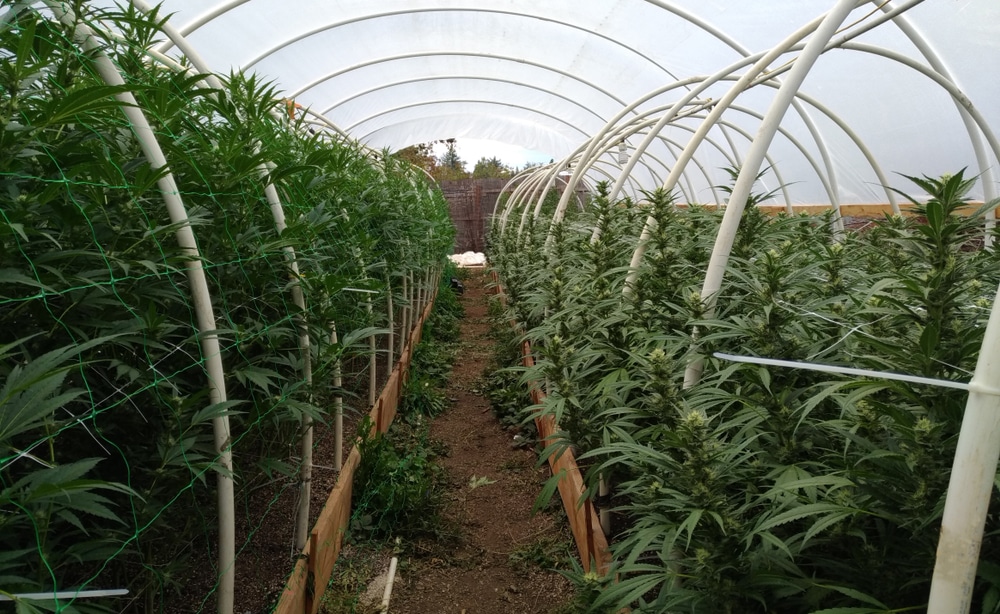
The decision to grow cold-weather weed depends on your experience level, resources, and willingness to take on the challenge. For those who are up for it, let’s reiterate the top tips:
- Monitor the humidity: Excessive or insufficient air moisture levels lead to additional health issues. Watch your plants for symptoms like mildew and wilting.
- Protect plants from frost: Shelter them with blankets or cloth to trap heat and keep them warm.
- Provide supplemental light: The days are shorter in the winter, which may disturb or stunt plant growth. Carry pots indoors in the evening for additional lights-on hours.
- Add organic matter to the soil: Mulch, compost, and manure improve soil structure and increase its ability to retain heat.
- Avoid stressful practices: Experiments with training, intense pruning, and nutrients further damage the plant, so save them for warm-weather crops.
Low and slow: Mastering cold-weather cultivation
Cold-weather outdoor cultivation can be quite an adventure. It’s not for the faint of heart, but if you’re willing to put in the effort, you can get bountiful harvests in the chilliest seasons.
Beyond negotiating the lowest temperature for growing weed, remember the risks of snow, frost, and freezing rain. Make your garden as protected as possible to help it survive and thrive.
Remember to treat this endeavor as an educational experience. You’ll learn valuable lessons about cannabis cultivation and gain a greater appreciation for the plant.
Are you up for the challenge? Visit our store, purchase weed seeds of cold-resistant strains, and get growing.


